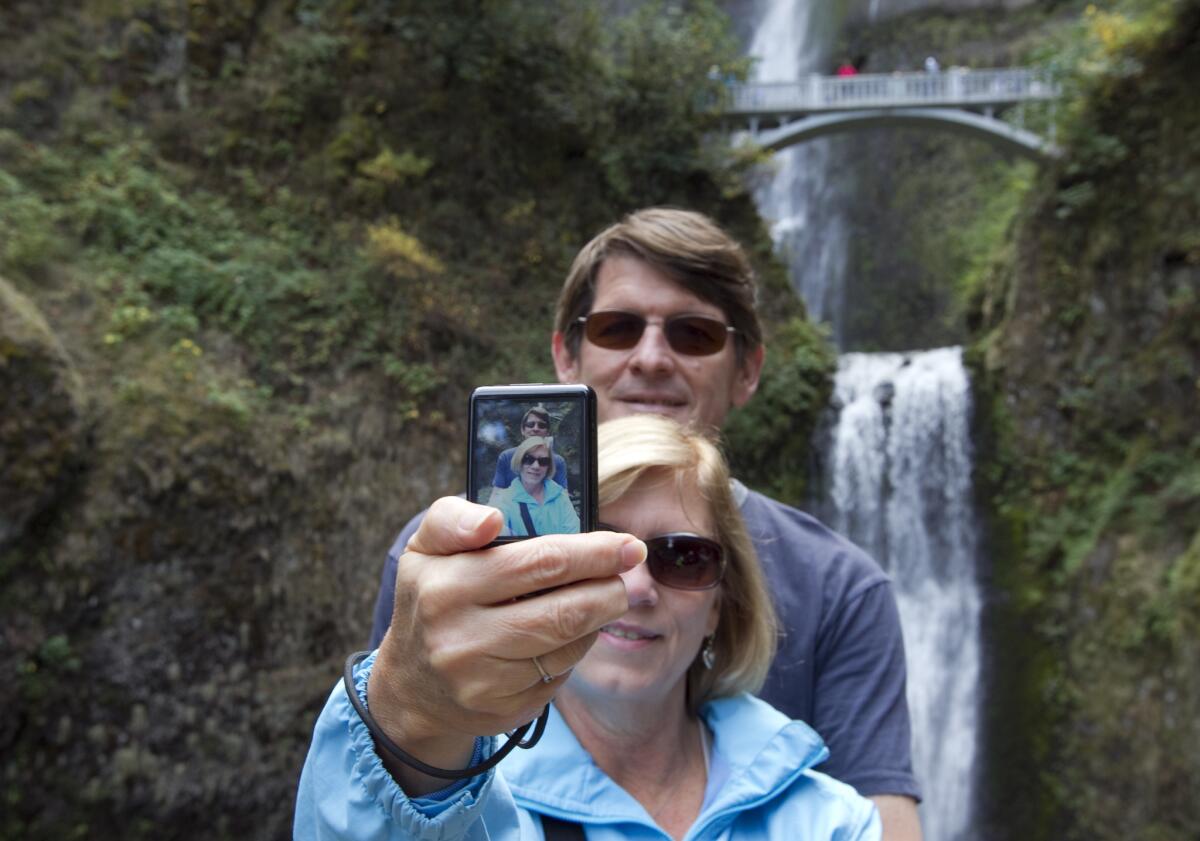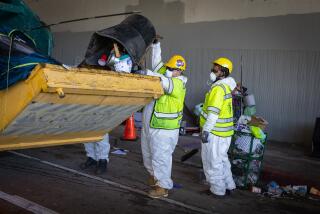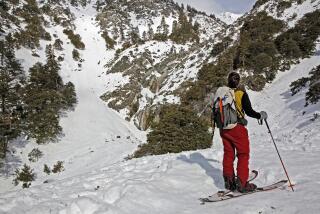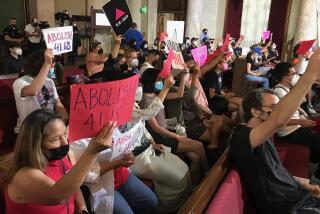Parsing the Forest Service’s (bad) proposed photo regulations

Early last month the U.S. Forest Service posted a proposed regulation that seemed to set the stage for government control of journalists’ access to public lands, with the added insult of wanting to charge hikers for photographing or filming their experiences in public wilderness areas.
The problem, it turns out, has less to do with government overreach than with the amorphously worded proposed regulation, which left an effort to standardize a permitting process open to much broader interpretation, at least according to the Forest Service. I’ll give them the benefit of the doubt that they didn’t intend to chill investigative reporting or whistle-blowing, a potential result of the proposed regulations. But the wording needs to be clarified.
The Forest Service oversees 191 million acres of public land, including designated wilderness areas, national monuments (such as the one being considered for the San Gabriel Mountains), recreation areas and scenic sites. These lands are separate from the acreage under the jurisdiction of the Bureau of Land Management and the National Park Service. Part of the Forest Service’s mandate is to regulate commercial exploitation of federal lands it controls, so it has a process for handling requests for film shoots and other commercial videotaping projects.
The proposed regulations would make permanent a provisional set of rules that have been on the books for four years, but the updated proposal includes some changes in the granting of permits that have deservedly prompted outrage from 1st Amendment advocates. Among other things, the rules say the Forest Service must consider whether the project “has a primary objective of dissemination of information about the use and enjoyment of wilderness” or about such features as its ecology and geology.
Note that it says “and,” not “or,” which suggests that if the point of the filming has a negative impact, then the Forest Service can reject the permit. The regulations do make room for journalists covering breaking news, but in a strict reading could leave investigative projects, feature stories or interviews with whistle-blowers that involve photos or videos subject to obtaining a permit - which the Forest Service really has no right to demand in the first place. This is a prescription for public relations, not journalism.
Some of the initial reporting on the proposed regulation was a bit off the mark, as Gabe Rottman of the ACLU points out. Initial reports that individual hikers might need an expensive permit to snap souvenir shots doesn’t seem to be the case. And the Forest Service says initial reports that it wants to set the highest fee at $1,500 a day isn’t part of their proposal, but is in a separate proposal by the Department of the Interior (the Forest Service is part of the Department of Agriculture) to standardize commercial filming permits across federal properties. The Forest Service also supports that other proposed regulation, so it’s really just a degree of separation.
So what would be affected by the Forest Service’s proposed regulation? Rottman matches it against the Forest Service’s handbook at the ACLU’s Free Future blog:
“According to the handbook, permits are required for two types of activities. You need a permit for ‘commercial filming,’ regardless of where it occurs. And you need a permit for ‘still photography’ that requires props, sets, or models; could impose administrative costs on the Forest Service; or takes place at a location where the public is normally not allowed.
“Commercial filming is defined broadly as any moving image or sound recording that could generate income. The only carve-out is for ‘breaking news,’ which is defined as an ‘event or incident that arises suddenly, evolves quickly, and rapidly ceases to be newsworthy.’ Still photography is defined circularly as any photography that takes place in a non-public part of the forest, uses props etc., or could impose administrative costs on the service.”
In the face of the backlash, the Forest Service has extended the comment period a month until Dec. 3, and said it is taking seriously the critiques of potential 1st Amendment conflicts. That’s heartening, though the proof will be in the final details.
As Rottman argues, there is a “foundational flaw in the regulation—it needlessly picks on photography.” If the intent is to preserve the federal lands, then craft a regulation that “imposes rational limits on commercial activity in places where it could harm the forests,” and leave the photographers and videographers alone – unless their project would leave a mark.
More broadly, the Forest Service also should not make itself the arbiter of content, which it would implicitly be able to do under the regulation that requires the service to consider a request within the framework of whether it “has a primary objective of dissemination of information about the use and enjoyment of wilderness.” That kind of censorship lies far outside the Forest Service’s mission as protector of the land and, for that matter, far outside the scope of the federal government in general. In fact, it’s hard to see how the regulation would survive a constitutional challenge.
Even though the Forest Service says it doesn’t intend to play the role of censor, fixing the proposed regulations so the agency doesn’t grant itself that authority is the best reassurance it can give us.
Follow Scott Martelle on Twitter @smartelle.
More to Read
A cure for the common opinion
Get thought-provoking perspectives with our weekly newsletter.
You may occasionally receive promotional content from the Los Angeles Times.






